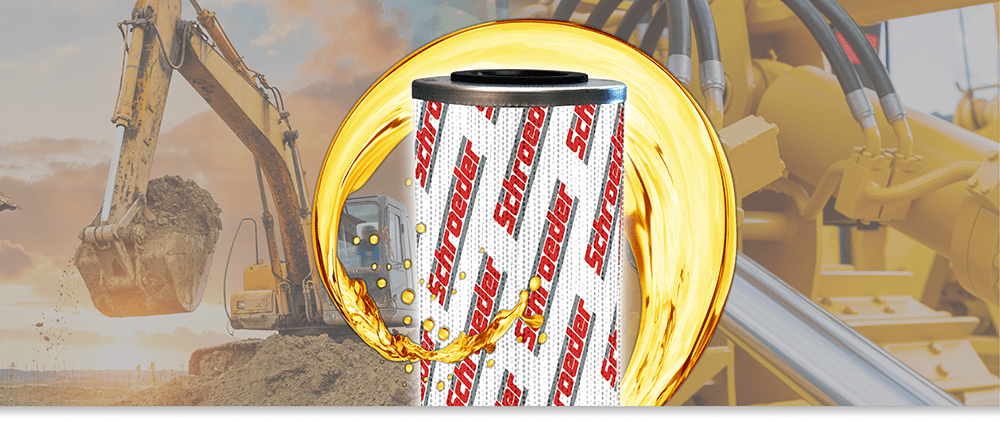
Anyone involved in the industrial field has likely come across the term “hydraulic filtration” before. But, what is it?
Hydraulic systems and machinery operate by applying pressure to dense fluids or oils, called hydraulic fluid, in order to transfer mechanical energy to other components within the system. Some examples of equipment that utilizes hydraulics include heavy machinery like backhoes and cranes, vehicle braking systems, and even theme park rides.
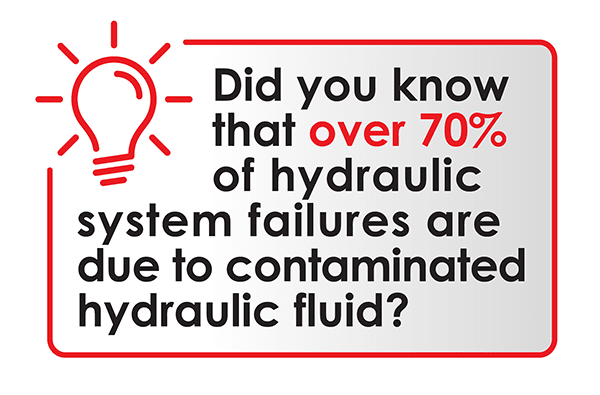
However, hydraulic fluid is at risk of contamination. Particles that are smaller than what is visible to the human eye are able to sneak into a hydraulic system and cause damage to internal components, leading to expensive repairs. Over 70% of all system failures are caused by contaminants in the hydraulic fluid. Even when no immediate failures are apparent, high contamination levels can be present and sharply decrease hydraulic controls in the blink of an eye.
Types of Contamination
Contamination can come from two basic sources. It either enters the system from outside (ingestion) or are generated from within (ingression). Types of contamination include:
- Air
- Water
- Microbial Growth (Yes, microbes can grow in hydraulic fluid!)
- Varnish, which can be caused by degraded oil
- Particulates, including ingested dirt or degraded particles from internal system wear
Contamination Control Through Hydraulic Filtration
Contamination cannot be completely stopped, but it can be managed. Hydraulic filtration is what “cleans” contamination from the operating fluid in equipment. Specially designed hydraulic filters are used for removing contaminants from fluids and safely disposing of them without causing harm to the equipment.
Contamination control through filtration is what will keep equipment running better, for longer, and with fewer maintenance updates.
Types of Hydraulic Filters and Systems
There are several types of hydraulic filters based on their position within the system. The filter housings, which are engineered for a variety of pressure ratings, contain a filter element which absorbs contaminates and is switched out when full. Multiple types of filter may be used depending on factors like component sensitivity or great amounts of ambient contamination.
In-Line Filtration
An in-line filter is a filter unit which is plumbed directly into the hydraulic system. These filters operate when the hydraulic machine is active, filtering the hydraulic fluid as the system is in operation and protecting the hydraulic pump and other vital components from contaminate wear.
There are a variety of in-line filters designed to function at various points in a system, such as the hydraulic fluid reservoir and return lines. They come in two basic forms: spin on filters and cartridge filters.
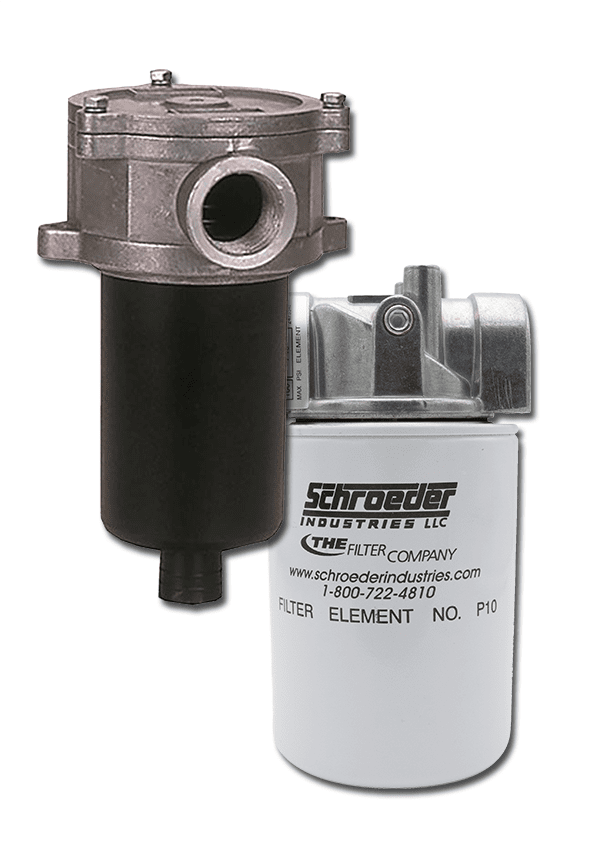
- Cartridge Filters include three separate components: the head (which attaches directly to the system), the filter element (which traps contaminates and filters the fluid), and the cartridge bowl (which threads onto the head and contains the filter element). When the filter is full, only the filter element is discarded and replaced. Cartridge filters can be more challenging to change, and are subject to possible damage and wear in the process, but are overall more cost efficient and less wasteful than spin on filters.
- Spin On Filters combine the cartridge bowl and filter element into a single unit. This unit is screwed onto the hydraulic system, and when full, the entire unit is removed, disposed of, and replaced. While spin on filters are very easy and convenient to switch out compared to cartridge filters, they result in much more more waste when thrown away.
Offline Filtration
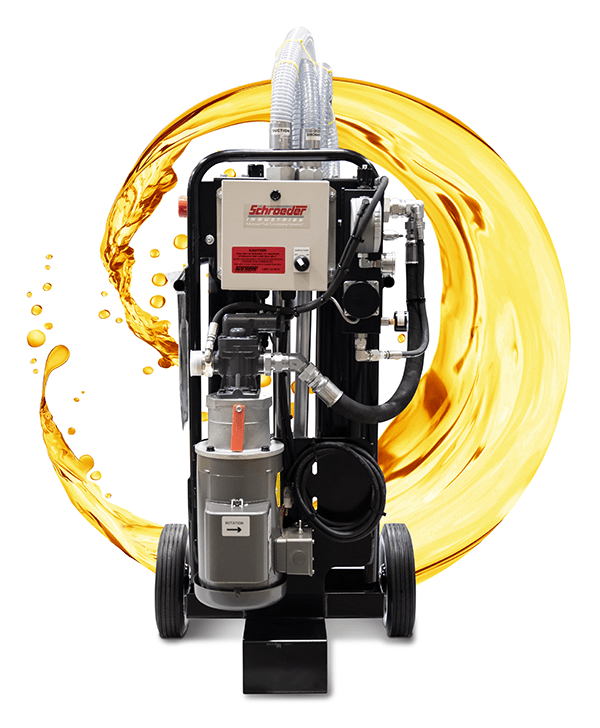
While in-line filters are more typical, stand-alone units that operate offline and away from the hydraulic application are also effective in contamination control. Offline filter systems, such as hydraulic filter carts, are commonly used to enhance the in-line filtration and are not meant as replacements.
Their main advantage over an in-line filtration system is that they can be used even when the hydraulic equipment is not active. Equipped with a pump-motor group of their own, offline oil conditioning units do not require the power of a hydraulic machine. They are their own independent system.
Oil conditioning units are typically used for the conditioning of stored fluid, fluid dispensing applications and transferring processes. It is basically summed up that everywhere the fluid is not flowing through a system, it should be accompanied by a hydraulic filter cart.
Filter Elements
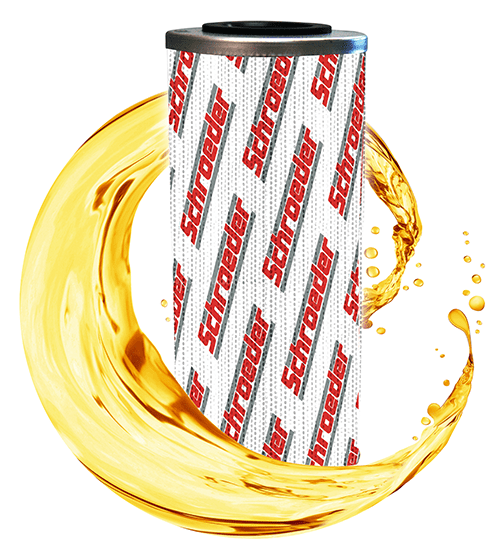
Filter elements are the heart and soul of every hydraulic fluid filtration system. Depending on the type of contamination affecting a system, there is a wide variety of filter elements engineered for various filtration challenges.
Elements can be manufactured to filter various particulate sizes, capture water, and even reduce static charges that can build up in the hydraulic fluid. For clean fluid, choosing a high quality filter element is one of the most important considerations.
Hydraulic Filtration Solutions from Schroeder Industries
Want to protect your valuable hydraulic equipment? Schroeder Industries offers a full range of filtration solutions, backed by decades of proven quality and innovation in the field of fluid filtration. Contact us for more information on how our hydraulic filtration products can enhance your equipment.







